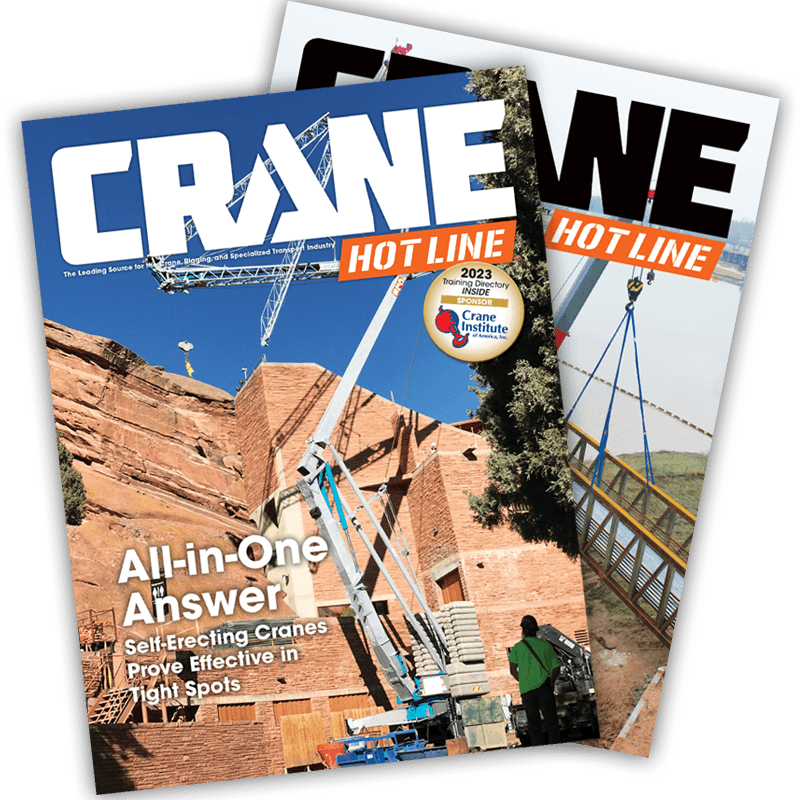The Next Generation of Knuckleboom Cranes
A quick look will tell you that knuckleboom cranes are an amazing piece of engineering technology. Also known as a loader crane, an articulating crane or a picker crane, these highly versatile machines designed with at least one point of articulation in the boom assembly allows them to manipulate loads in a variety of ways and in tight spaces, and at the same time easily fold onto vehicle chassis and body for transport.
Knuckleboom cranes offer optimal outreach, impressive lifting capacity and unmatched precision, and for those reasons their use is rising among operators serving a range of industries. To meet those needs, manufacturers are not only expanding knuckleboom model offerings, but they are also introducing new designs, features and advanced technologies.
“PALFINGER is always seeking innovative ways to enhance our knuckleboom cranes to better serve our customers,” said Greg Sneek, product manager, articulating cranes at PALFINGER North America. “With precision demands for crane operators on the rise, we’ve unveiled two new models in our TEC series this year that are designed so operators can work effectively in challenging structures and limited spaces, ultimately saving time during setup.”

The new PALFINGER PK 1350 TEC and PK 1650 TEC knuckleboom models feature electronic controls and smart features including:
- Smart Control: This feature allows operators to move the crane tip to any position with a single lever, enhancing speed and accuracy regardless of direction or movement.
- Memory Position: Operators can easily store and recall up to four crane positions, simplifying repetitive tasks.
- Leveling Assistant: This tool stabilizes the vehicle quickly and easily, reducing the leveling time by up to 80%.
“These advancements were made to improve operational efficiency and ensure greater safety and ease of use,” Sneek said. “Continuous innovation ensures our products meet the evolving needs of the industry and contribute to our customers’ success.”
For Bernie Faloney, CEO of Fascan International, the exclusive supplier of FASSI hydraulic articulating cranes for the United States and the Caribbean, the majority of advancements in the latest knuckleboom models are seen in the crane operator interface and controls. “The main benefit of these advancements is in the accuracy of the crane control abilities,” he said. “Smoother operation will continue to improve the precision of knuckleboom cranes.”

At CraneWorks, a Cormach knuckleboom dealer, Product Line Manager Craig Rogers noted that crane technologies are evolving at a rapid rate. “As regulations demand safer and more intelligent cranes to safeguard the operator and equipment,” he said, “the hydraulic cranes we knew 10 years ago are no longer the same products today.”
In particular, Rogers pointed out developments such as automated folding and unfolding systems and active stability monitoring technologies. “Not only are knuckleboom cranes more sophisticated today, but mechanics also need to be much more skilled on electronic systems in order to service and maintain these machines. As manufacturers keep pushing the boundaries on innovations, they drive us to adapt and use these advanced technologies.”

Market Outlook
Across the board manufacturers see a strong and vibrant market driving interest in knuckleboom cranes among existing and new users in the coming years.
“The outlook for 2025-26 is extremely optimistic for Fascan,” said Faloney. “There will be a definite upturn in housing markets because of lower interest rates and lower fuel costs. There has been a hesitancy in the past two years about purchasing any new machines because of uncertainty but now we’re looking forward to renewed interest.”
Extremely promising is how Rogers describes the outlook for 2025. “We see a positive outlook within our own organization as well as among our customers,” he said. “Orders will be driven by factors like growth in particular sectors and industries such as construction, oil and gas, and expansion projects in infrastructure, housing, mining and agriculture. At CraneWorks we serve multiple market segments, so we look forward to seeing overall growth in the coming year.”
For Sneek, with pent up demand due to purchase hesitancy and the relaxation of many supply chain issues, knuckleboom sales are poised to expand. “One of the biggest drivers is the growing awareness of the benefits of knuckleboom cranes by traditional telescopic or stiff boom crane users,” he said. “These operators see the benefits of higher payloads, greater reach, the ability to work in confined spaces and the efficiency of quick set-up times provided by the knuckleboom cranes.”



